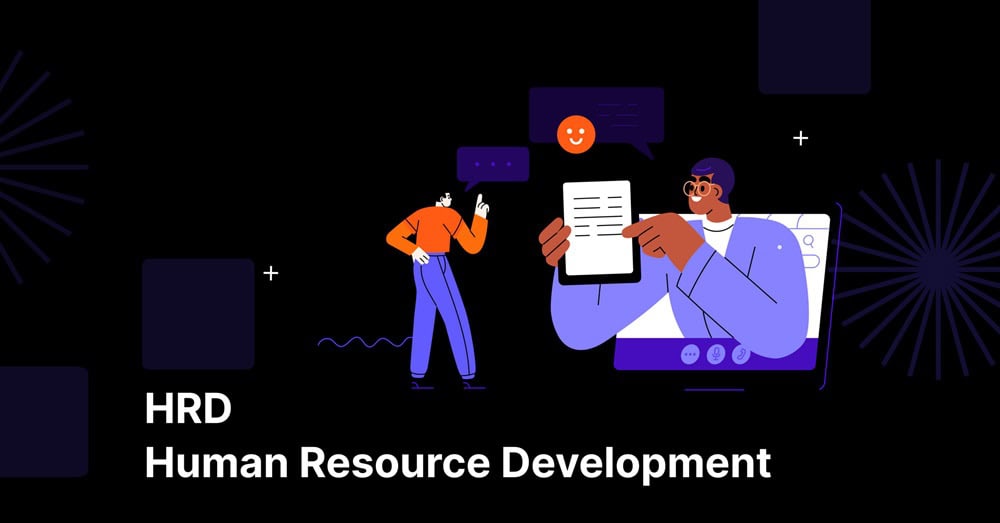Human Resource Development (HRD) is a crucial aspect of any organization that seeks to achieve sustainable growth and competitive advantage. This comprehensive guide delves into the definition and importance of HRD, elucidating its key components, benefits, and best practices.
Understanding Human Resource Development
Human Resource Development refers to a structured and continuous process that involves the development of skills, knowledge, and competencies of employees through various forms of training, education, and development programs. HRD aims to improve individual and organizational performance by fostering a culture of learning and development.
Key Components of Human Resource Development
1. Training and Development
Training and development are fundamental aspects of HRD. They focus on enhancing the skills and knowledge of employees to improve their performance and productivity. Training is typically short-term and specific, while development is a long-term process aimed at preparing employees for future roles and responsibilities.
2. Organizational Development
Organizational development involves initiatives designed to improve the overall effectiveness of the organization. This includes strategies for improving processes, structures, and culture within the organization to foster a more efficient and productive working environment.
3. Career Development
Career development programs help employees plan and manage their career paths within the organization. These programs include mentoring, coaching, and succession planning, which ensure that employees have the opportunities and support needed to achieve their career goals.
4. Performance Management
Performance management is a continuous process that involves setting performance expectations, monitoring progress, and providing feedback. This ensures that employees are aligned with organizational goals and are consistently working towards achieving them.
Importance of Human Resource Development
Human Resource Development plays a pivotal role in the success of an organization. Here are some of the key reasons why HRD is important:
Enhancing Employee Skills and Knowledge
HRD programs are designed to equip employees with the necessary skills and knowledge to perform their jobs effectively. This not only improves individual performance but also contributes to the overall productivity of the organization.
Promoting Employee Engagement and Retention
Employees who have access to development opportunities are more likely to be engaged and committed to their organization. This leads to higher levels of job satisfaction and reduces turnover rates, as employees feel valued and see a clear path for their growth within the company.
Fostering a Culture of Continuous Learning
A robust HRD strategy encourages a culture of continuous learning and improvement. This culture is essential for innovation and adaptability, as it ensures that employees are always acquiring new skills and knowledge to stay ahead in a rapidly changing business environment.
Supporting Organizational Change and Growth
HRD is crucial for managing organizational change and supporting growth. Through effective training and development programs, employees can acquire the skills needed to adapt to new processes, technologies, and business strategies, ensuring the organization can evolve and thrive.
Improving Organizational Performance
By aligning employee development with organizational goals, HRD helps improve overall performance. Well-trained and competent employees are more efficient, make fewer errors, and are better equipped to meet the challenges of their roles, which translates into better organizational performance.
Best Practices in Human Resource Development
To maximize the benefits of HRD, organizations should implement the following best practices:
Conducting Needs Assessments
Before developing HRD programs, it is essential to conduct thorough needs assessments to identify the specific skills and knowledge gaps within the organization. This ensures that the training and development initiatives are targeted and relevant.
Customized Training Programs
Tailoring training programs to meet the unique needs of the organization and its employees is crucial. Customized programs are more effective as they address the specific challenges and objectives of the organization.
Leveraging Technology
Incorporating technology into HRD programs can enhance learning experiences and accessibility. E-learning platforms, virtual training sessions, and mobile learning apps provide flexible and interactive training options for employees.
Monitoring and Evaluation
Continuous monitoring and evaluation of HRD programs are essential to ensure their effectiveness. Regular feedback from participants, performance assessments, and metrics tracking help in refining and improving the programs over time.
Encouraging Management Support
For HRD initiatives to be successful, they need the support and commitment of top management. Leaders should actively participate in development programs and champion a culture of learning within the organization.
Creating a Development Plan
Developing a comprehensive HRD plan that aligns with the organization’s strategic goals is vital. This plan should outline the objectives, methods, and resources needed for effective human resource development.
Challenges in Human Resource Development
While HRD offers numerous benefits, organizations may face several challenges in its implementation:
Resource Constraints
Limited resources, such as budget and time, can hinder the development and execution of effective HRD programs. Organizations need to prioritize and allocate sufficient resources to ensure the success of their development initiatives.
Resistance to Change
Employees may resist changes associated with new training and development programs. Overcoming this resistance requires effective communication, leadership support, and demonstrating the value of HRD to employees.
Keeping Up with Technological Advances
The rapid pace of technological advancements requires continuous updates to HRD programs. Organizations need to stay informed about the latest trends and incorporate relevant technologies into their development strategies.
Measuring ROI
Demonstrating the return on investment (ROI) of HRD programs can be challenging. Organizations need to establish clear metrics and evaluation methods to measure the impact of development initiatives on performance and productivity.
Conclusion
Human Resource Development is a strategic and essential function for any organization seeking to enhance its performance and competitiveness. By investing in the continuous development of employees, organizations can foster a skilled, engaged, and adaptable workforce capable of driving sustained success.





